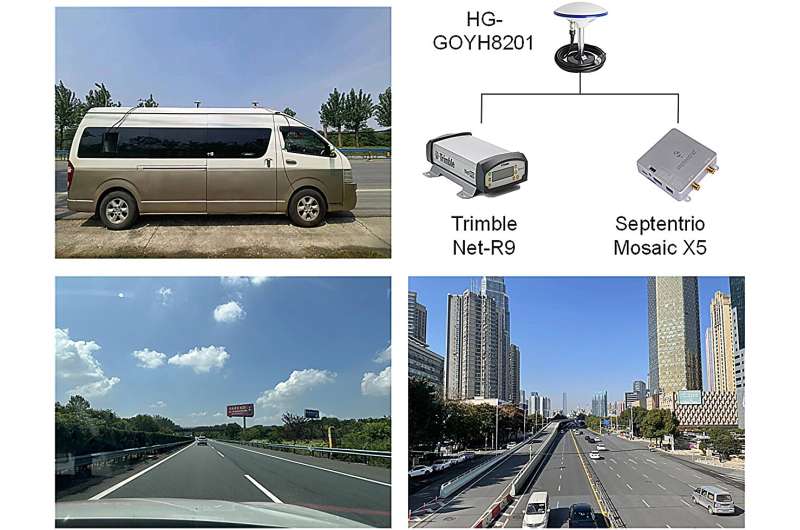
Innovative Global Navigation Satellite System (GNSS) positioning technologies harness massive vehicle-generated data to create high-resolution atmospheric delay correction maps, significantly enhancing Global Positioning System (GPS) accuracy across varied spatial scales. This new method exploits real-time, crowd-sourced vehicle GNSS raw data, refining traditional GPS applications and presenting a cost-effective solution for precise positioning.
The quest for enhanced Global Navigation Satellite System (GNSS) accuracy has been hindered by the limitations of current atmospheric correction models, which depend on sparse, high-cost infrastructure. These traditional models struggle to provide the high-resolution data necessary for precise positioning, especially in dynamic environments like autonomous driving. The advent of this study addresses this challenge by proposing a crowdsourced approach to generate detailed atmospheric maps, promising to significantly improve GNSS performance and reduce costs.
Researchers from the Chinese Academy of Sciences have developed an innovative GNSS positioning framework published on May 13 2024, in Satellite Navigation. The study details a system that uses dual base stations and Crowdsourced Atmospheric delay correction Maps (CAM) to achieve high-precision positioning, a significant advancement for applications such as autonomous driving and Internet of Things (IoT).
The research introduces a novel GNSS positioning framework that leverages dual base stations and massive vehicle data to produce high-resolution atmospheric maps, enhancing the precision of GNSS. This crowd-sourced approach, termed CAM, utilizes data from vehicles equipped with GNSS receivers.
These vehicles collect and transmit atmospheric delay data to a cloud server where it is integrated and processed to continuously update the CAM. This dynamic updating process improves both the CAM spatial resolution and the positioning accuracy for public users in real-time. The core innovation of this framework lies in its use of common vehicle GNSS data, which is more abundant and readily available compared to traditional data sources.
By aggregating and refining this data, the study achieves a cost-effective method for generating detailed atmospheric delay corrections. The CAM significantly reduces the reliance on expensive and less distributed Continuous Operational Reference System (CORS) stations traditionally used for atmospheric data, offering a scalable solution that enhances the feasibility and accuracy of precision GNSS applications.
Dr. Yunbin Yuan, lead researcher, states, “This framework not only lowers the costs of atmospheric data collection but also significantly increases the accuracy and reliability of GNSS positioning, marking a significant leap forward in location-based services.”
The application of this technology extends beyond improved Global Positioning System (GPS) accuracy; it also opens avenues for real-time environmental monitoring and has significant implications for urban planning, transportation, and emergency response systems. As vehicles become data collection hubs, the scalability of this technology promises extensive socio-economic benefits, particularly in highly urbanized regions.
More information:
Hongjin Xu et al, Crowdsourcing RTK: a new GNSS positioning framework for building spatial high-resolution atmospheric maps based on massive vehicle GNSS data, Satellite Navigation (2024). DOI: 10.1186/s43020-024-00135-8
Provided by
Aerospace Information Research Institute, Chinese Academy of Sciences
Citation:
From the road to the cloud: Leveraging vehicle Global Navigation Satellite System raw data (2024, May 17)
retrieved 28 June 2024
from https://techxplore.com/news/2024-05-road-cloud-leveraging-vehicle-global.html
This document is subject to copyright. Apart from any fair dealing for the purpose of private study or research, no
part may be reproduced without the written permission. The content is provided for information purposes only.




